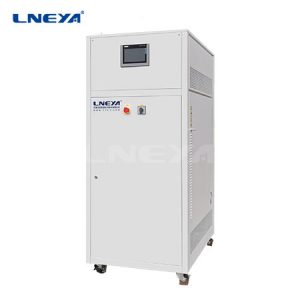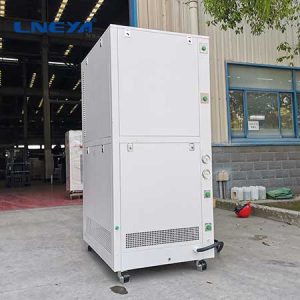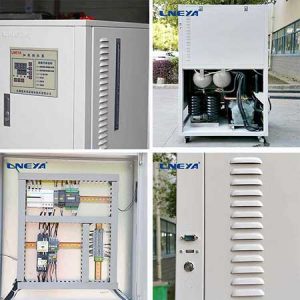How to effectively maintain the laboratory chiller?
Regularly check whether the cleaning of each heat transfer plate is complete and whether there is sediment, coke, rust layer and other scaling attached, and immediately clean. At the same time, it is also necessary to check whether the heat transfer plates are tightly bonded to the sealing gasket, and whether the rubber gasket itself is intact, so as to avoid leakage caused by rubber gasket degumming and damage.
The compression nuts and upper and lower guide rods of the FL +5°C ~ +35°C Water Chillers should always be lubricated with lubricating oil.

Each surface adjustment shall be in the charge of a specially assigned person, and the operation and protection shall be carried out in strict accordance with the operating procedures.
When the sealing gasket needs to be replaced or the unglued part needs to be repaired, the plate shall be taken down and placed on the table. The old sealing gasket shall be removed, or the glue residue in the groove of the heat transfer plate shall be wiped off with fine sandpaper at the unglued part.
Then the oil stain in the groove shall be wiped off with carbon tetrachloride or trichloroethylene and other solvents, and the back of the new rubber gasket shall be wiped off with fine sandpaper. Similarly, the oil stain shall be wiped off with carbon tetrachloride or trichloroethylene solvent.

1. How to use the laboratory cooler?
Flow refers to a group of parallel flow channels with one medium in the same moving direction in the laboratory cooler, and flow channel refers to the medium moving channel composed of two adjacent plates in the laboratory cooler.
According to the fluid pressure and temperature, confirm whether the detachable type or the brazing type is selected. When confirming the plate type, it is not appropriate to select plates with too small veneer area to avoid too many plates, too small flow rate between plates, and too low heat transfer coefficient. Pay more attention to this problem for larger heat exchangers.
The process combination form shall be confirmed based on the heat exchange and fluid resistance calculation and meeting the requirements of process conditions. Try to keep the convection heat transfer coefficient in the cold and hot water channels equal or close to each other, so as to obtain better heat transfer effect.

In general, several channels are connected in parallel or in series to form different combinations of cold and hot medium channels.
2. How to use the laboratory cooler?
1. First, a certain inspection site shall be reserved around the cooler installed in the laboratory.
2. Before installation, the pipeline connected with it shall be cleaned to prevent sand, oil, welding slag and other sundries from entering the laboratory cooler, which may cause flow channel obstruction or damage the plates.
The laboratory cooler itself occupies a small area and is light in weight. In addition to the volume of the equipment itself, there is no need to reserve additional space for inspection and installation. The thickness of the plates used for heat exchange is only 0.6~0.8mm.
 LNEYA
LNEYA
 简体中文
简体中文


















































































